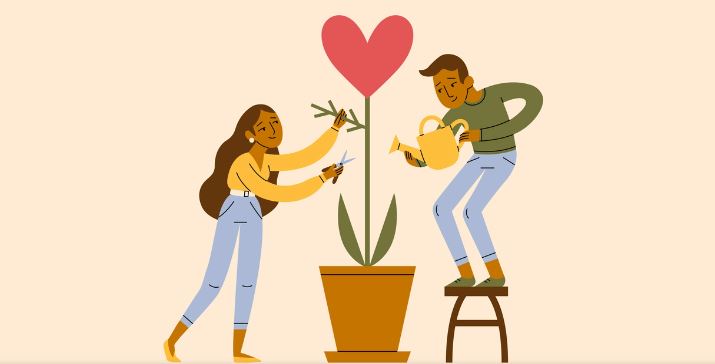Trauma is a distressing experience that has the potential to alter one’s perception of the world and the people around them. Its effects vary from person to person, but one thing is clear: trauma can leave lasting imprints on our mental and physical well-being, impacting the way we relate to others.
Inter-relational trauma, in particular, is experienced within the context of relationships, be it emotional, physical, or sexual abuse, neglect, or betrayal. When trauma occurs within the framework of a relationship, it weaves a complex web of emotional pain and psychological damage that can be difficult to unravel and mend.
The Impact of Inter-Relational Trauma on Relationships
Inter-relational trauma might lead individuals to harbour a deep mistrust of others and be hesitant to form close bonds or open up emotionally. This can make it challenging to establish intimate connections and sustain long-term relationships.
Communication, too, can be affected by trauma. Expressing emotions or setting boundaries may become a struggle for those who have experienced trauma, leading to misunderstandings and conflicts in their relationships.
Furthermore, trauma might impact one’s ability to regulate emotions and behaviours. Survivors may find themselves grappling with anger, anxiety, or depression, which can strain their relationships with others. Self-esteem and self-worth might also be affected, making fostering healthy and fulfilling relationships difficult.
Finding Safety and Comfort in Animals
Amidst the tumultuous aftermath of inter-relational trauma, it is essential to acknowledge that animals can provide a profound sense of security and solace. Their unconditional love and presence might offer a healing refuge, offering a safe space to begin rebuilding trust and connection with the world around us.
Practising Grounding Techniques for Healing
In the journey of healing from inter-relational trauma, finding solace and regaining a sense of inner balance can be a transformative process. Amidst the challenges and complexities that trauma brings to our relationships, incorporating trauma-informed breathing practices, such as the one-minute focus breathing exercise, can serve as a powerful tool to support individuals on their healing path.
By fostering gentle awareness of the present moment and grounding yourselves in the rhythm of your breath, we create a safe space to begin untangling the knots of trauma and reclaim a sense of inner calm and resilience. The in-the-moment focus on your breath becomes an anchor, allowing you to gently release pent-up tension and activate your body’s natural relaxation response.
Through these trauma-informed breathing techniques, we nurture a deeper connection with our bodies, enabling us to regulate our emotions and gain clarity on potential choices and actions in response to the challenges we face in our relationships.
As we incorporate the one-minute focus breathing exercise into our trauma-informed coping strategies, we unlock the ability to cultivate heightened awareness, embracing each moment with sensitivity and understanding. This approach empowers us to find moments of peace and clarity amidst the complexities of inter-relational trauma, fostering the capacity to rebuild and nurture healthy connections with others and, most importantly, with ourselves.
“Through our healing journey, we pave the way for greater resilience and growth,
guided by the unwavering embrace of compassion and the illuminating power of self-awareness.”
Esther van der Sande
Practice: Focus Breathing for 1 Minute:
You are welcome to take a moment to find a comfortable sitting or lying position. Gently close your eyes if you feel comfortable doing so. When ready bring your attention to your breath, and begin to take slow, breaths in through your nose.
Inhale, allowing your breath to fill your belly. Feel your abdomen expand as you breathe in, and then slowly exhale through your nose, allowing your belly to gently contract.
As you continue this rhythmic breathing, focus your attention on the sensation of your breath flowing in and out. Let go of any distracting thoughts or worries and redirect your mind back to the present moment, centred on your breath.
As you breathe in and out, notice the sensations in your body. Feel the air entering and leaving your nostrils, the rise and fall of your chest and abdomen, and the subtle movements of your body with each breath.
If your mind starts to wander, gently guide it back to your breath without judgment. Keep your focus on the present moment and the rhythmic flow of your breath.
Continue this breathing for one minute, fully immersing yourself in the calming and centring experience. Embrace the peace and stillness that comes with being fully present in the here and now.
After one minute, take a few moments to be with yourself, observing any changes in your body and mind. When you are ready, gently open your eyes and return to your day with a renewed sense of calm and clarity.
The Path to Healing from Inter-Relational Trauma
The journey to healing from inter-relational trauma is both complex and demanding, often necessitating the guidance of mental health professionals. Therapy can equip individuals with the tools and resources needed to process their trauma, develop healthy coping mechanisms, and learn how to form and maintain healthy relationships.
In addition to therapy, self-care practices like exercise, meditation, and finding comfort in the presence of animals can help individuals manage their symptoms and improve their overall well-being. The support of friends and family also plays a vital role in the healing process, providing a sense of safety, comfort, and validation.
In summary, inter-relational trauma can leave a profound and enduring impact on how we approach and navigate relationships. Understanding the effects of trauma on our bodies and minds is an essential step in the healing process. With the guidance of mental health professionals, the love and care of our dear ones, and the practice of grounding techniques, we can overcome the negative effects of inter-relational trauma and cultivate healthy, fulfilling relationships.
By Esther van der Sande

Leave A Comment